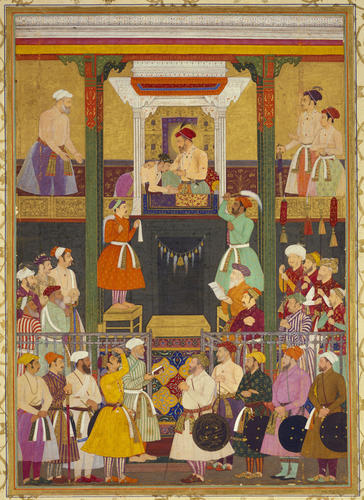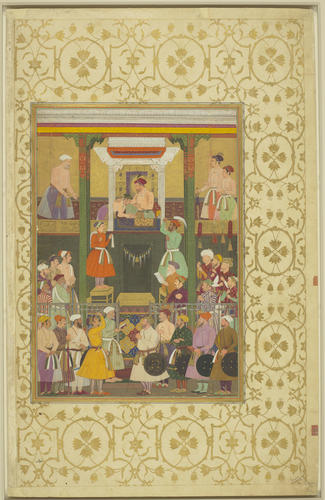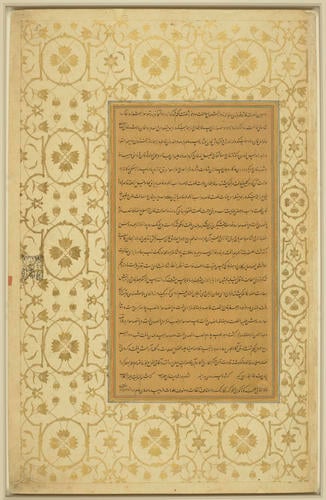-
1 of 253523 objects
The Departure of Prince Shah-Shuja for Kabul (16 March 1638) c. 1640-50
Painting in opaque watercolour including metallic paints. | 34.3 x 23.9 cm (image) | RCIN 1005025.ag

Murar
Master: Padshahnamah پادشاهنامه (The Book of Emperors) Item: The Departure of Prince Shah-Shuja for Kabul (16 March 1638) c. 1640-50

Murar
Master: Padshahnamah پادشاهنامه (The Book of Emperors) Item: The Departure of Prince Shah-Shuja for Kabul (16 March 1638) c. 1640-50

Murar
Master: Padshahnamah پادشاهنامه (The Book of Emperors) Item: The Departure of Prince Shah-Shuja for Kabul (16 March 1638) c. 1640-50



-
Padshahnamah fol. 147v
(plate 32)
The text description of this illustration describes it as Shah-Jahan’s son, Prince Shah-Shuja, leaving to join the Deccan campaign but it is more likely to depict him leaving Agra for Kabul, Afghanistan, in March 1638, as part of the Mughal expedition against the Shah of Persia over the fortress of Qandahar as it shows the nobles appointed to accompany him on that campaign.
Prince Shah-Shuja is shown taking leave of his father on the balcony of the Hall of Public Audience. His grandfather, the Prime Minister Asaf Khan, stands immediately behind him, and his brothers stand behind their father. Also in attendance are several noblemen of the court, some of whom wear cameos and medals of the Emperor’s face around their necks or fastened to their turbans.
On the wall below the jharoka balcony hangs a ‘chain of justice’, formed of bells alternating with yak or horse tails. Emperor Jahangir had a real chain of golden bells running from the Agra Fort to the riverside that could be shaken by anyone seeking redress in order to attract the Emperor’s attention. One of the oldest Asian symbols of rulership with origins in ancient Persia, the chain here symbolises Shah-Jahan’s political power and his recent success over the Persian ruler.
The artist signed the scroll held by Afzal Kahn just to the right of the chain: ‘the work of the slave of the court, the lowliest, Murar’.Bibliography:
Milo Beach and Ebba Koch, King of the world : the Padshahnama, an imperial Mughal manuscript from the Royal Library, Windsor Castle, 1996
Saqib Baburi, Beyond the Akbarnamah: Padshahnamahs and Official Regnal Chronography for Shah-Jahan Padshah (r. 1037/1628-1068/1658), 2010.Provenance
Illustration from a Padshahnamah manuscript formerly in the Mughal imperial library and acquired by Asaf al-Dawlah, Nawab of Awadh, c.1780-90; presented by Saadat Ali Khan, Nawab of Awadh, to George III via Lord Teignmouth in June 1799.
-
Creator(s)
(illustrator)Acquirer(s)
-
Medium and techniques
Painting in opaque watercolour including metallic paints.
Measurements
34.3 x 23.9 cm (image)
58.2 x 36.8 cm (page dimensions)
Category
Alternative title(s)
The Departure of Prince Shah-Shuja' for Kabul (16 March 1638)